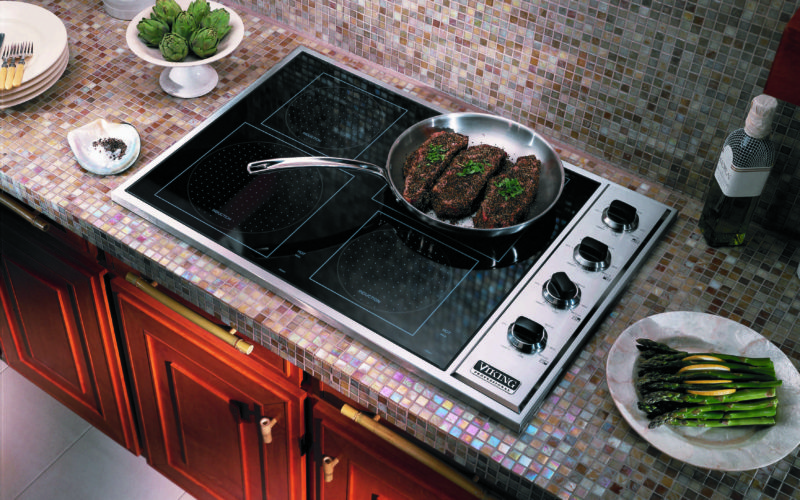Induction cooking might woo you into the kitchen
AMANDA BANCROFT
Making Ripples
Looking for energy savings this summer? While it’s not the easiest, cheapest change to make to one’s home, induction cooking is one option worth considering, especially if you’re remodeling the kitchen. These stoves have their pros and cons, but they are considered more energy-efficient than gas, propane or electric coil stoves.
Induction cooking uses magnetic induction, rather than thermal conduction, to heat a pot or skillet. We’ll skip the technical details, but there are books or online videos that explain the internal mechanisms quite well. Induction is significantly more energy-efficient than gas and slightly more efficient than flat-surface electric stoves because induction cooktops can heat compatible cookware quickly and not waste heat that would otherwise go into the house or parts of the stove not in contact with the pot. It only heats what you want it to heat, a huge advantage during summer. The U.S. Department of Energy has tested various kinds of stoves, and reports that induction is indeed more efficient. Various entities have tested induction, and although the exact numbers appear to vary from test to test, induction always comes out on top or tied with flat-surface electric.
Safety concerns are less of an issue with induction, unless you have a pacemaker or have been told by your doctor to avoid sources of electromagnetic fields. Obviously, you will not catch on fire or see any accidental explosions with induction as you might risk with gas ranges, because no open fire is used. You can even place your hand onto the stove surface while it’s on without getting burned! But do not allow aluminum foil to contact the surface, as it can melt and damage the stove surface.
The real downsides are that some chefs still prefer the higher degree of control and speed that come with gas ranges. The cost of the stove tends to be higher than alternatives, plus not everyone has a set of cooking vessels that are magnetically compatible, and if you don’t, then you’ll need to go out and buy a new or used set which will allow magnetic induction. Specifically, any vessel made of ferromagnetic metal should work: cast iron, magnetic stainless steels (non-magnetic stainless steels won’t work), or almost any type of cookware could be used if it’s placed on a ferromagnetic disk (or hotplate). The easiest test is to place a magnet on the bottom of the pot. If it sticks, it’ll work!
Induction cooking is not as easy a change as buying fair trade chocolate, recycling, or biking to work, but if your stove kicks the bucket, you might just consider trying a less expensive countertop version for one or two pots. But since we’re living on the surface of the sun for the next couple of months, solar cooking is a tantalizing option, too!
Amanda Bancroft is a writer, artist, and naturalist building an off-grid cottage for land conservation on Kessler Mountain. She and her husband Ryan blog about their adventures and offer a solar-hosted online educational center on how to make a difference with everyday choices at: www.RipplesBlog.org.










